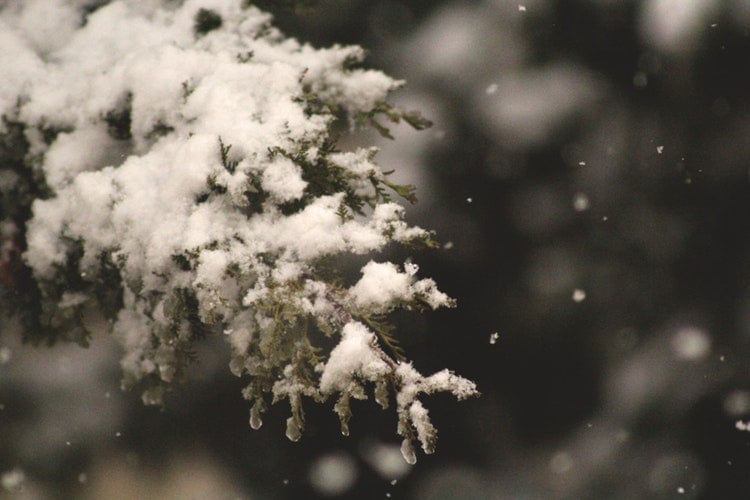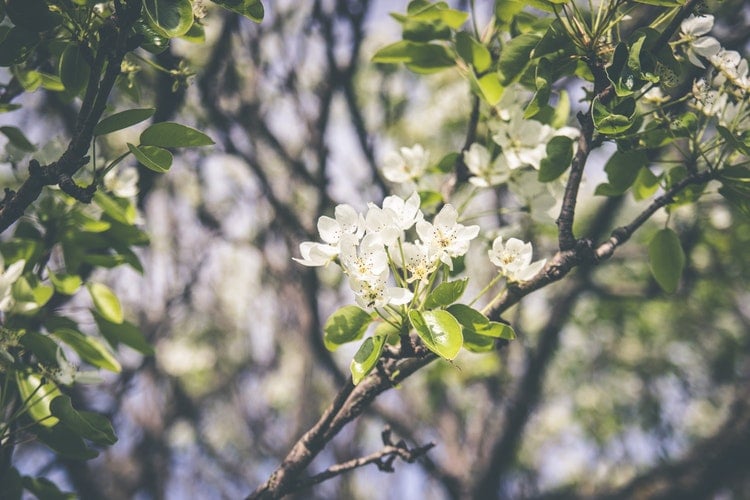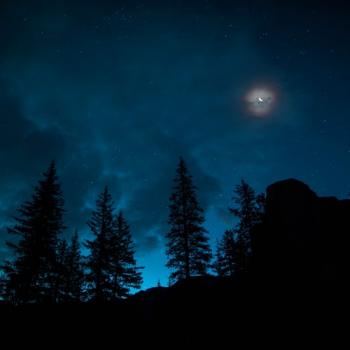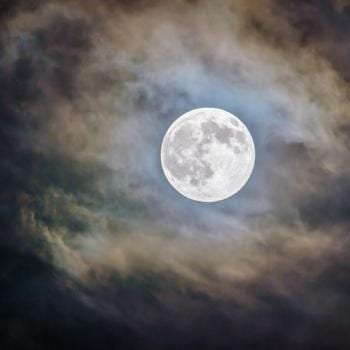When we look at Paganism, Wicca, and Witchcraft there is often an emphasis on the importance of nature and connecting with the land. The reason behind this importance and how that connection is achieved often varies, but one common practice among traditions is the observance of the Sabbats. These rituals are intended to celebrate the changing of the seasons and to reflect on the specific mysteries that come with those transitions (both within ourselves and without). However, one thing that I’ve noticed over the years is just how impractical the Sabbats are in terms of how they actually apply to one’s own landscape and our attempts to form a relationship with it.
Let’s begin by taking a step back and briefly looking at how the concept of the Sabbats has evolved over time. The idea of the Witches’ Sabbath came about in Europe during the Middle Ages and through the Renascence era. Author Thomas Hatsis notes that, “The Witches’ Sabbat was a composite idea fueled by the literate class’s appropriation and redefinitions of numerous templates.” This included concepts taken from Christian theology as well as local folklore and animistic beliefs. The Sabbath was described as a nocturnal gathering of Witches centered around the worship of the Devil and included elements of feasting, dancing, sex, and magic making. These gatherings were said to occur in special places like churchyards, fields, hilltops, and mountains. In terms of specific days of the year, throughout the Witch trials numerous dates were given here and there. However, these mentions were nothing like the concept of the Wheel of Year that we know today. In fact, out of all the confessions throughout Europe and America, there was only one mention that came close. This was when Isobel Smyth confessed in 1661 that her coven met at Candlemas (February 2nd), Rood Day (May 3rd), Lammas (August 1st), and Hallowmas (November 1st).

Flash forward two-hundred and sixty years to the publication of The Witch-Cult in Western Europe by Margaret Murray. In her book, which we know was highly influential on the modern Witchcraft revival, she uses the confession of Isobel Smyth as her primary evidence for the dates of the Witches’ Sabbats. In turn, Gerald Gardner (who was greatly inspired by Murray) incorporated these dates into his developing system of Witchcraft (what we know today as Wicca). Originally, Gardner only used the four Sabbats named by Murray. He notes in Witchcraft Today that “Witches observed four great festivals: May eve, August eve, November eve (Hallowe’en) and February eve.” He equates these Sabbats with the Gaelic fire festivals of Samhain, Imbolc, Beltaine, and Lughnasa. He would again compare the Witches’ Sabbats (which this time he refers to as Halloween, Candlemas, May Eve, and Lammas) with the Druidic festivals in his later book The Meaning of Witchcraft. In both books he does mention the solstices but they seem to be of less importance to him than the other four Sabbats. In fact, it would be a while before the solstices and equinoxes were incorporated. Skip forward a couple of decades to the 1960’s and 70’s when Aidan Kelley was developing the liturgy for his Wiccan tradition known as the New Reformed Orthodox Order of the Golden Dawn. As part of this work he gave new names to the solstices and equinoxes. Two of these names, Litha and Ostara, were taken from month-names given by a Christian Monk named Bede in his book The Reckoning of Time. The autumnal equinox was given the name Mabon, after the Mabon ap Modron, a character from Welsh mythology. And thus, the Sabbats that we know today came together: Samhain, Yule, Imbolc, Ostara, Beltane, Litha, Lughnasa, and Mabon.

Keeping this background information in mind, the underlying issue with the Sabbats is that they were originally based on a specific climate. This means that, as seasonal markers, they don’t quite line up with other regions of the world.
There seems to be a lot of emphasis placed on the exact date of each Sabbat. For example, people often get into debates on whether Samhain falls on October 31st, November 1st, or when the sun reaches 15 degrees Scorpio. While this shows that there is some wiggle room, we seem to have become accustomed to a fixed system of seasonal rites. On one hand, this makes sense considering that most holidays, across different cultural groups, tend to happen on the same day each year. But, if the Sabbats are specifically about observing seasonal tides, wouldn’t it make more sense for the specific dates to be more fluid? Of course, one could also look at this issue from an astronomical perspective, that the solstices and equinoxes mark the beginning/ending of each season while the cross-quarters days mark the in-between. However, ask yourself how well these dates actually reflect what’s going on in your local landscape? For some the answer may be that this system is quite efficient and that these specific dates accurately echo the seasonal changes of their land, but for others this is not always the case. For example, astronomically the first day of Winter occurs on the 21st (give or take) of December but the first snowfall where I live can happen as early as October. Additionally, when the Spring Equinox rolls it’s a sure thing that we have at least two more months of snow left. The point here is that if I’m attempting to force a fixed system that doesn’t fit the land upon which I live, how well am I actually forming a relationship with it?

So, what do you do if the Sabbats don’t match with how the seasons occur where you live? You rethink them! This may seem quite radical in the face of the fixed Wheel of Year we have been indoctrinated with but remember that if you’re trying to connect with the land, its best to make that connection personal.
But how do we go about doing this? The first step is to pay attention to signs from nature. What I mean by this is that, throughout the year, notice that is happening in nature. Are there specific signs that signal the seasons are changing? For example, where I live one of the signs that Autumn has begun is when the geese begin to leave. Likewise, I know the Spring is coming when the geese begin to return. Are there animals, fish, insects in your area that act as harbingers of the seasons? Furthermore, consider the cycle of trees and other plants. What are the first plants to emerge after Winter, when do the first buds on the trees appear? What about weather patterns? Look to the forecast to figure out when the first frost is coming or when the temperatures are predicted to rise. I recommend recording these observations in a journal so that you can return to them later and see what patterns emerge over time.
The next step is to consider what these times of year mean to us, in other words what exactly are we celebrating? Some people get put off by the Sabbats because in some places there is an emphasis on agricultural fertility. But I think that there are many possible narratives behind the Sabbats and it’s important to find one that is personally relevant to both yourself and your landscape. For example, one could focus their rituals on psychological themes which are reflected in the seasons, deities/spirits, and ourselves. Winter is often associated with darker aspects of deity and self, therefore the Sabbats during those months could be focused on introspection, communing with lower parts of self, and exploring the Underworld.
Once you have these two aspects mapped out, you can start to form your own Wheel of Year. This may mean using the already existing Sabbats but shifting the dates. For example, where I live, at Beltane our weather is more in line with the themes of Ostara. Or it could mean reworking the theme behind the Sabbat (i.e. Beltane being the first days of Spring). You could do both or you could do away with the classical Sabbats altogether and create new ones. Based on the signals you’ve noticed, is there a specific occurrence that holds particular meaning and could be incorporated into a ritual celebration? I like to create ritual around the geese returning in the Spring, themed around the birds bringing the sun and warmth from the south.
….
The purpose of this article is to encourage further consideration about how we connect to the land through the Sabbats. It’s not to disparage the already existing Wheel of Year, but rather to rework it in a more personal way that fits with the climate where we each live. There are many possibilities for how to rethink the Sabbats, more than what was even covered in this article, but the best way to get started is to get outside and pay attention to what the landscape is telling you. Personally, I used to really struggle with the Sabbats, they felt scripted and unbearably generic. When I celebrated them, it felt like I was just going through the motions. However, I’ve found that once I started focusing them on my particular climate, the Sabbats became more personal and powerful experiences. Not only did my relationship with the land become stronger but I also began to learn a lot more about myself and my own internal cycles.
References:
The Witches’ Ointment by Thomas Hatsis
Rowan Tree and Red Thread by Thomas Davidson
The Meaning of Witchcraft by Gerald Gardner
Witchcraft Today by Gerald Gardner
The Witch-Cult in Western Europe by Margaret Murray
Modern Pagan Festivals: A Study in the Nature of Tradition by Ronald Hutton
















